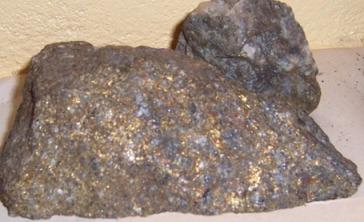Chalcedony is a cryptocrystalline (extremely fine) form of crystalline silica containing the minerals Quartz and Moganite ( SiO2). In this variety, crystals are too small to be seen with the unaided eye or even a simple microscope and can be seen only with an electron microscope.
Crystal Quartz is colourless, transparent or translucent silica
Goldstone is a reddish brown (due to crystals of copper metal) type of artificial glittering glass (Silica / Quartz)
Labradorite, a Feldspar mineral
((Ca,Na)(Al,Si)4O8)
Sapphire too is a form of Corundum (Aluminium Oxide) (Al2O3) used a a gemstone. Infact Corundum with any colour other than red is called Sapphire. Iron and Titanium can give it a blue, yellow or greenish colour.
Chromite (FeCr2O4) mineral is the only ore for Chromium. Chromium and Ferrochromium are the main products after Chromite refining.
Dolomite (CaMgCO3) a carbonate mineral used in the manufacture of float glass, concrete and magnesium metal.
Mica Schist is a multi element silicate rock which is a very good conductor of heat but a bad conductor of electricity and hence used as electrical insulators in many appliances like electric Irons.
Lapis Lazuli is a rock containing minerals - Lazurite (Na, Ca, Al, Silicate, sulphide, Chloride, Sulphate), Calcite(CaCO3), Sodalite (Sodium Aluminium Silicate with Chlorine) and Pyrites.
Quartzite is a hard metamorphic rock which is formed when sandstone is subjected to heat and pressure. Iron oxide impurities give it a reddish colour.
Marble is a metamorphic rock formed after the metamorphism of Limestone and consisting largely of calcium carbonate (CaCO3).
Coral Reefs are the remains of secretions of marine corals and contain mostly calcium carbonate (CaCO3)
Limestone is a sedimentary rock consisting largely of calcite mineral, (CaCO3).
Clay minerals are hydrous Aluminium Phyllosilicates and are common in fine grained sedimentary rocks like shale and mudstone
Garnet:
Iron Aluminium Silicate
(Fe3Al2(SiO4)3)
Rutile Sand is 94% ~ 96% Titanium Dioxide (TiO2)
Another beach sand mineral, Monazite is a phosphate of rare earth elements and contains Thorium. Rare earths are used in gas mantle industry, picture tubes for TVs etc. Element Thorium is radio active and can be made into a fissile material for nuclear power generation. India has vast deposits of Thorium and there is great deal of promise for its utilization in our reactors.
Suggested resources for rocks and minerals :
Uranium Pellets are used in a nuclear reactor for generating electricity. The pellets contain nuclear fuel, a radioactive compound of uranium. It was a great opportunity (thanks to IEEE-UTA ) to visit the 2 x 1200 MW Comanche Peak Nuclear Power Station run by TXU in Glenn Rose, TX. The TXU engineers were very cordial and gave us a small postcard souvenir with a dummy uranium pellet.
Sillimanite sand is composed of Silica and Alumina (Al2O3.SiO2). and used in temperature resistant refractory bricks
Zircon sand is a silicate of Zirconium with formula (ZrO2.SiO2). The alloys and compounds of Zirconium are used in Nuclear Power Plants
Illmenite sand contains approx 50% Titanium Dioxide and 50% Iron Oxide (FeO.TiO2)
The mineral deposits are usually concentrated up to a depth of about 1.5 metres below the water table.
Heavy minerals brought in by wave action of sea
Ilmenite and Rutile found in sand dunes near the beach
Beach Sand Mineral Deposits on the Chatrapur coast of Orissa are beneficiated by one of India's oldest public sector companies, Indian Rare Earths Ltd. The black deposits are Ilmenite and Rutile while the red/maroon is Garnet.
Beach Sand Minerals like Ilmenite, Rutile, Zircon, Sillimanite, Monazite and Garnet are called Heavy Minerals and have wide ranging applications in manufacture of paints & pigments, refractories, Nuclear power plants, electronics, welding electrodes etc. Mineral sands are obtained from disintegration of rocks and are washed down into the sea by wave action which are again transported to the coast by high tidal waves. Along the coast/ beach it is found in big dunes and are hence called Beach Sand Minerals. The above mentioned heavy minerals are found along with quartz/silica. They are separated from the sand deposits based on their Electrical Conductivity, Magnetic Susceptibility, Specific Gravity etc. For more information on beach sand beneficiation please see this article.
Basalt from a rapidly cooled flowing volcanic lava
Bituminous Coal is a soft coal containing Bitumen, a tar like substance and is intermediate between Anthracite (best) and Lignite (poor) varieties of coal.
Anthracite is the highest carbon containing type of Coal with very few impurities. It has a bright luster.
Graphite is the highest grade of coal (hard to ignite, so is not used as fuel). It is the most stable allotrope of Carbon under Standard Temperature and Pressure and is a good conductor of electricity.
Mudstones & Shale are fine grained sedimentary rocks and contain a mixture of clay mineral, Quartz and Calcite.
Granite is an Igneous rock formed from Volcanic matter. Silica and Alumina are the main composition of granite.
Red Sandstone is a sedimentary rock composed of Quartz and or feldspar
Halite or Rock Salt (Sodium Chloride, NaCl)
Braunite a silicate mineral containing Manganese and used as an ore for Mn.
Pyrolusite (MnO2) is a mineral containing Manganese dioxide and is an ore for Manganese. This specimen is in the form of botryoidal texture (grape like structure)
Malachite (Cu2CO3(OH)2) [copper carbonate]
Chalcopyrite (CuFeS2) is a copper iron sulphide mineral.
Native Copper occurs naturally as metallic copper in the uncombined state and has historically been the prime ore for the metal.
Rutile primarily consists of titanium dioxide (TiO2). It is a major source of Titanium along with Ilmenite. (FeTiO3).
Iron Pyrite consists of Iron Sulphide (FeS2). It is also called fools gold.
Iron Ore consists of minerals magnetite (Fe3O4), hematite (Fe2O3), goethite (FeO(OH)), limonite (FeO(OH).n(H2O)) or siderite (FeCO3) and is the chief source of Iron and Steel
Bauxite ((AlOx(OH)3-2x) is a the main ore of Aluminium.
Ruby is a form of Corundum (Aluminium Oxide) (Al2O3) used as a gemstone. The red colour is due to presence of Chromium
Amazonite is green colour Microcline (KAlSi3O8) Feldspar. The green colour is due to Lead and water.
Rhyolite is a silica rich igneous rock with Quartz and Feldspar as the major constituents.
Spessartine is a Manganese aluminium garnet (silicate) variety with formula Mn(II)3Al2(SiO4)3 . It is used as gems or as abrasives.
Beryl contains Beryllium Aluminium Cyclosilicate with chemical formula Be3Al2(SiO3)6. Pure Beryl is colourless and impurities give it a white, blue, yellow or red colour. If trace amounts of Chromium are present, Beryl becomes green in colour and is known as emerald.
Jadeite is a sodium and aluminium rich Pyroxine (Silicate) with formula NaAlSi2O6. Jadeite is formed in Metamorphic rocks under high pressure and low temperature
Obsidian is a naturally occurring volcanic glass. Pure Obsidian is dark in colour because of Iron and Magnesium impurities but the presence of Cristobalite (another Quartz variety) gives it a distinct snowflake pattern.
Smokey Quartz is a brownish or gray variety of Quartz
Rose Quartz's pale pink colour arises due to the presence of trace amounts of titanium, iron or manganese.
Jasper is an opaque variety of Chalcedony with an impure form of silica and is found in red, yellow or green colorations
Agates are a microcrystalline variety of Chalcedony and occur as nodules in volcanic rocks
Amethyst
The specimen above has a fossilized plant thats millions of years old
Naturally occuring Amethyst contains Iron impurities.
Mica
Crystal Quartz
Yellow Jasper
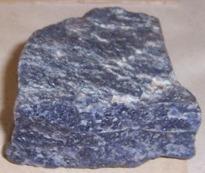
Blue Jade
Beryl (Emerald)
Shale
Mudstone
Ferrochrome
Garnet (Spessartine)
Snowflake Obsidian
Blue Agate
Carnelian Agate
My drawing room houses a small ores, minerals & rock museum that's been growing ever since I was a school student. I was fascinated by Chemistry & Geography and so collecting elements and compounds occurring naturally was quite a natural choice. My father who worked in the beach sand mineral beneficiation industry gave me my first samples and my geologist uncle guided me in the right direction. It's as much exciting to see the perfect geometrical shapes of crystals occurring naturally as it is to witness the spectacular color patterns on some of these rocks (Agates). Isn't it amazing that Diamond and Graphite, both made of elemental Carbon are as different as chalk and cheese just because of the difference in their atomic arrangement !!! Similar is the story with Quartz (Silicon Dioxide). Amethyst, Chalcedony and Agate all have the same formula, SiO2 but very different appearances. You got to see it to believe it :)
Quartz is the most abundant mineral after Feldspar - a group of aluminosilicates that makes up more than 60% of the planet's continental crust. Amethyst is by far the most spectacular variety of Quartz and is used as a semiprecious gemstone.
We do
not inherit
the earth from
our ancestors. We borrow it from our children
~ Native American quote.
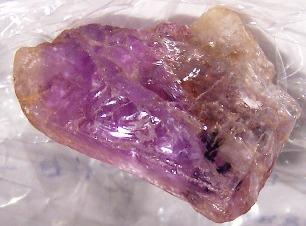
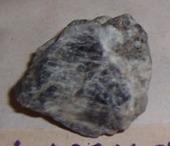

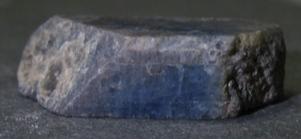
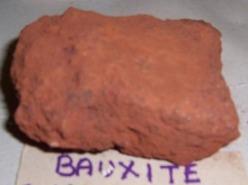
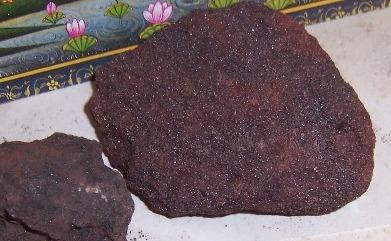
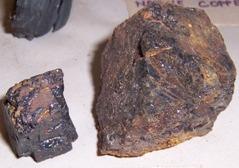
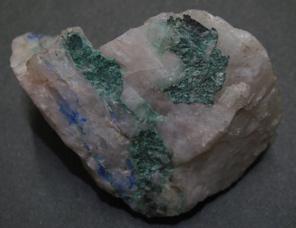
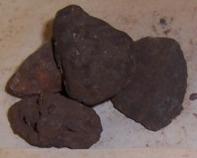
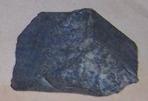
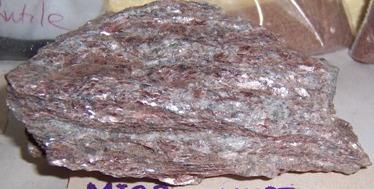
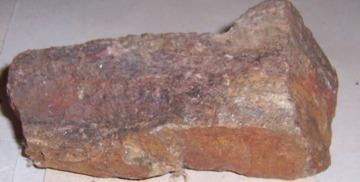
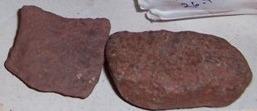
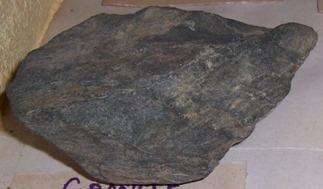
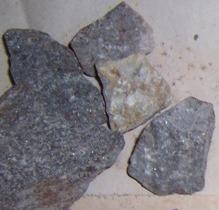
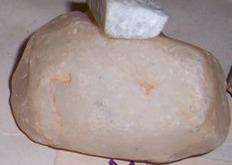
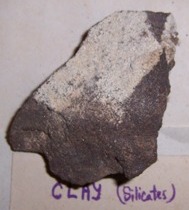
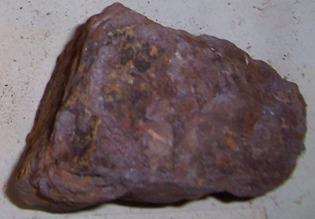
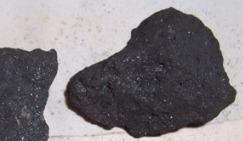

\
